Cambodia is a destination that will captivate and inspire you with its diverse and amazing tourist attractions. You can experience the ancient and the modern, the cultural and the natural, the adventurous and the relaxing, in this beautiful and charming country. In this travel guide, we will reveal some of the best places to visit in Cambodia in 2025, but there are many more to uncover and enjoy. Are you excited to start your unforgettable journey to Cambodia?
Angkor Wat, A Must-Visit Attraction in Cambodia
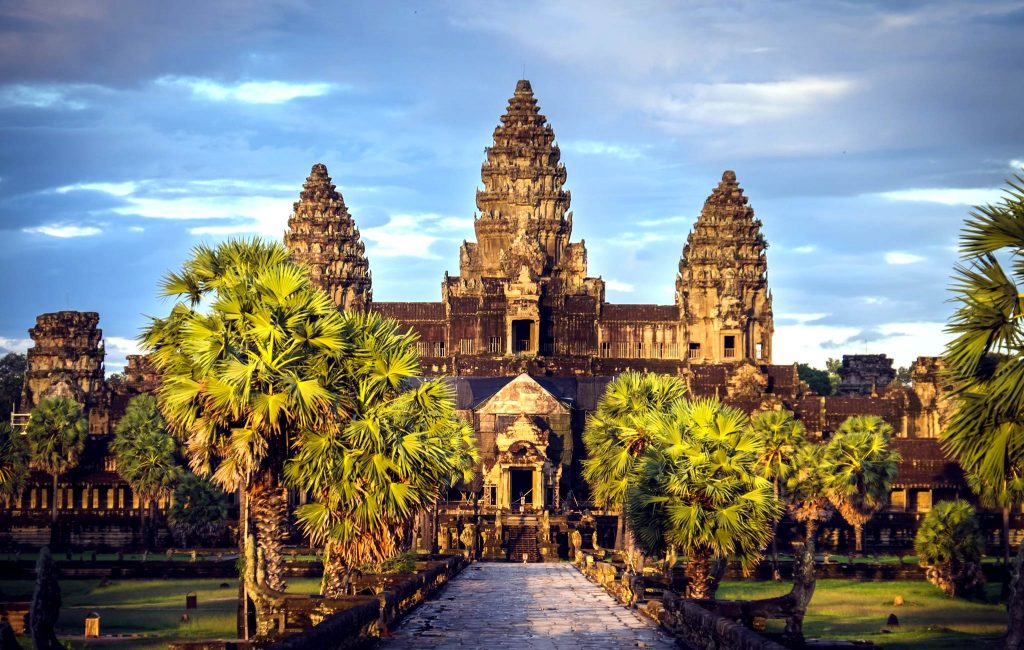
Journey through the sprawling temple complex, marveling at Angkor Wat’s grandeur and Ta Prohm’s mystical ruins. Angkor Wat is the most famous and impressive of the hundreds of temples in the Angkor Archaeological Park, a UNESCO World Heritage Site. Built in the 12th century by King Suryavarman II, Angkor Wat is a masterpiece of Khmer architecture and art, dedicated to the Hindu god Vishnu. The temple features a stunning five-towered structure, surrounded by a moat and a wall, and adorned with exquisite bas-reliefs and sculptures depicting scenes from Hindu mythology and history.
Angkor Wat is best visited at sunrise or sunset, when the light creates a magical atmosphere and the crowds are less. Ta Prohm is another remarkable temple in the Angkor complex, famous for its overgrown and crumbling appearance, as nature has reclaimed its territory. Ta Prohm was built in the late 12th century by King Jayavarman VII, as a Buddhist monastery and university. The temple is known for its giant trees and roots that engulf the walls and towers, creating a surreal and mysterious scene. Ta Prohm is also known for being featured in the movie Tomb Raider, starring Angelina Jolie.
Banteay Srei in Sieam Reap
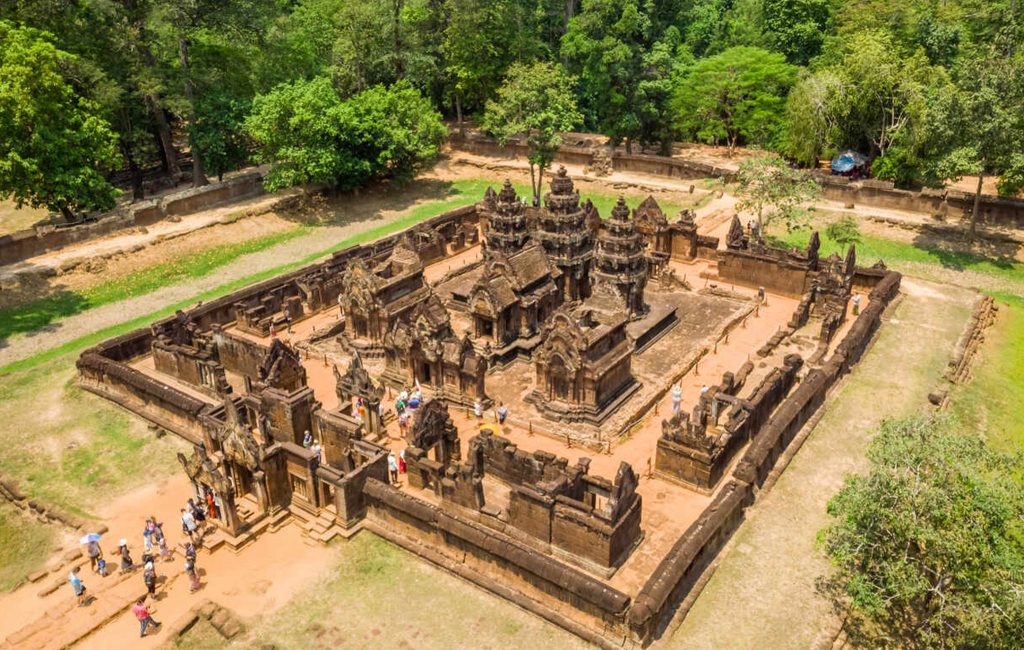
Banteay Srei is a 10th-century Hindu temple in Siem Reap, Cambodia, dedicated to Shiva and Parvati. It is located near the hill of Phnom Dei, about 25 km northeast of the main group of temples in the Angkor Archaeological Park. Banteay Srei is also known as the “Citadel of Women” or the “Pink Temple”, because of its small size, its pink sandstone material, and its elaborate carvings of female deities and floral motifs. Banteay Srei is considered to be a jewel of Khmer art, as it showcases the finest and most intricate examples of classical Khmer sculpture and architecture.
Banteay Srei was built by two courtiers, Yajnavaraha and Vishnukumara, who were counsellors to King Rajendravarman II. The temple was originally called Tribhuvanamahesvara, meaning “the great lord of the threefold world”. The temple consists of three concentric enclosures, each with an entrance gate and a library. The innermost enclosure contains the main sanctuary, which has five towers arranged in a quincunx pattern. The sanctuary walls are decorated with scenes from Hindu mythology, such as the Ramayana, the Mahabharata, and the Puranas. The carvings are remarkable for their depth, detail, and delicacy, as well as their vivid expressions and gestures.
Banteay Srei is one of the most popular and impressive places to visit in Cambodia, as it offers a unique and exquisite glimpse into the ancient and sophisticated culture of the Khmer Empire. Banteay Srei is a hidden treasure that will marvel and enchant any visitor who appreciates art and beauty.
Phnom Penh
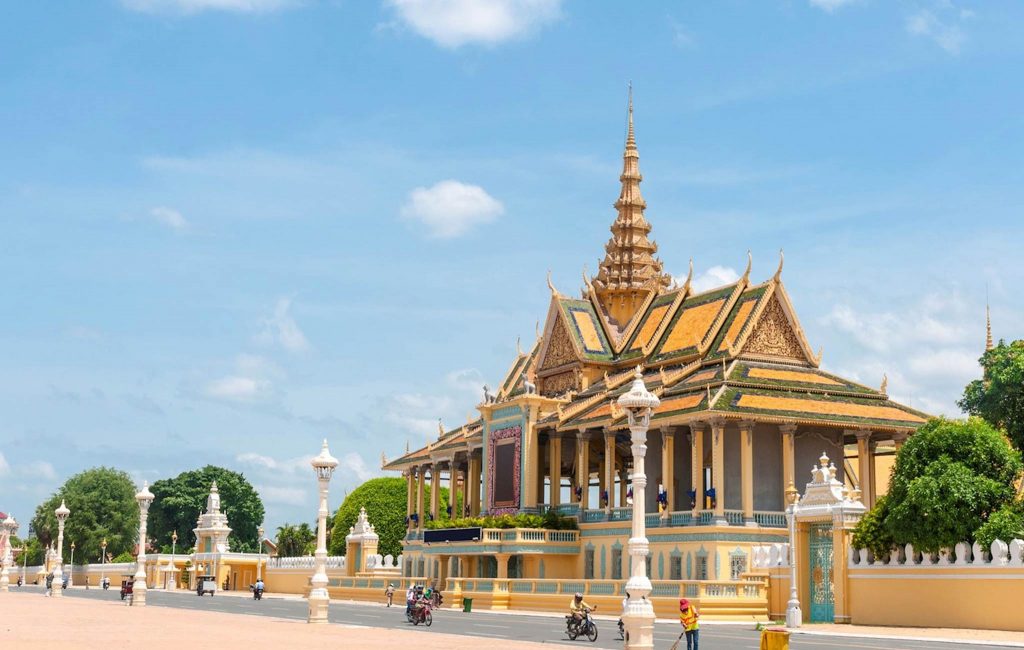
Discover the captivating capital, from the Royal Palace’s opulence to the poignant Tuol Sleng Genocide Museum. Phnom Penh is the capital and largest city of Cambodia, located at the confluence of the Mekong and Tonle Sap rivers. Phnom Penh is a vibrant and cosmopolitan city, with a rich history and culture, as well as a lively nightlife and food scene. One of the main attractions in Phnom Penh is the Royal Palace, the official residence of the king and the royal family. The palace complex consists of several buildings, gardens, and pagodas, displaying the elegance and splendor of Khmer architecture and art. The most notable structures are the Throne Hall, where official ceremonies take place, and the Silver Pagoda, which houses a collection of priceless Buddha statues and relics.
Another important attraction in Phnom Penh is the Tuol Sleng Genocide Museum, a former high school that was turned into a prison and torture center by the Khmer Rouge regime in the 1970s. The museum preserves the evidence and the memories of the atrocities committed by the Khmer Rouge, who killed nearly two million Cambodians in their quest for a radical communist utopia. The museum displays the cells, the instruments of torture, the photographs, and the testimonies of the victims and the survivors, offering a sobering and moving insight into one of the darkest chapters of Cambodian history.
Koh Rong
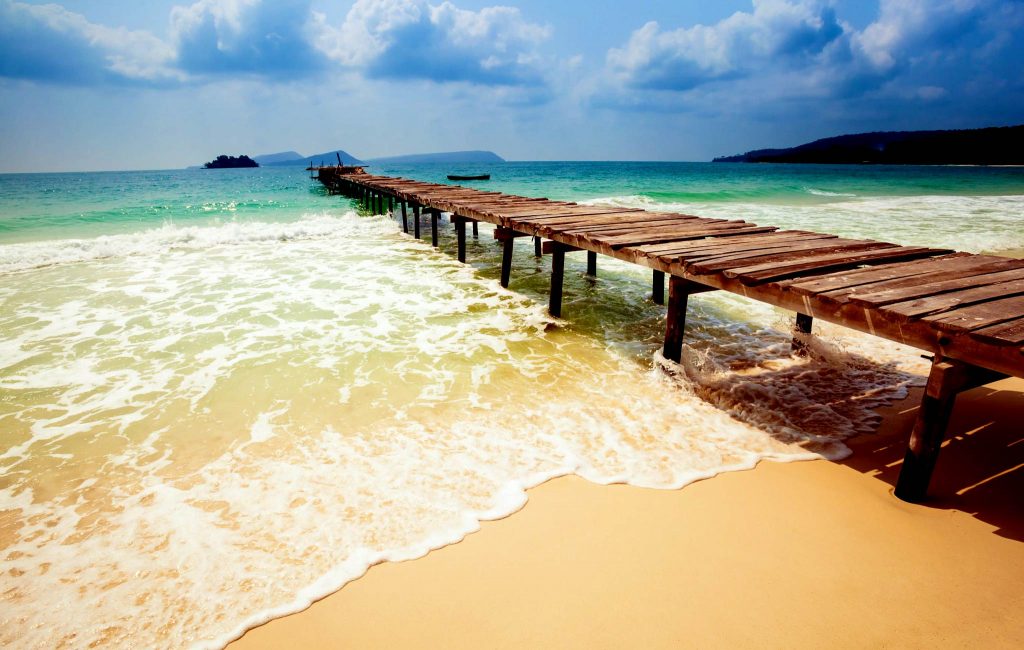
Dive into turquoise waters, bask on pristine beaches, and explore vibrant nightlife at this island paradise. Koh Rong is the second largest island in Cambodia, located in the Gulf of Thailand, about 25 kilometers off the coast of Sihanoukville. Koh Rong is a popular destination for travelers who seek a tropical getaway, with crystal clear waters, white sandy beaches, and lush jungles. Koh Rong offers a variety of activities and experiences, such as snorkeling, diving, kayaking, hiking, fishing, and zip-lining.
Koh Rong is also known for its lively nightlife, with bars, restaurants, and parties along the main beach of Koh Touch. For those who prefer a more secluded and serene atmosphere, there are also quieter and more remote beaches and bays, such as Long Beach, Sok San Beach, and Coconut Beach.
Tonle Sap Lake
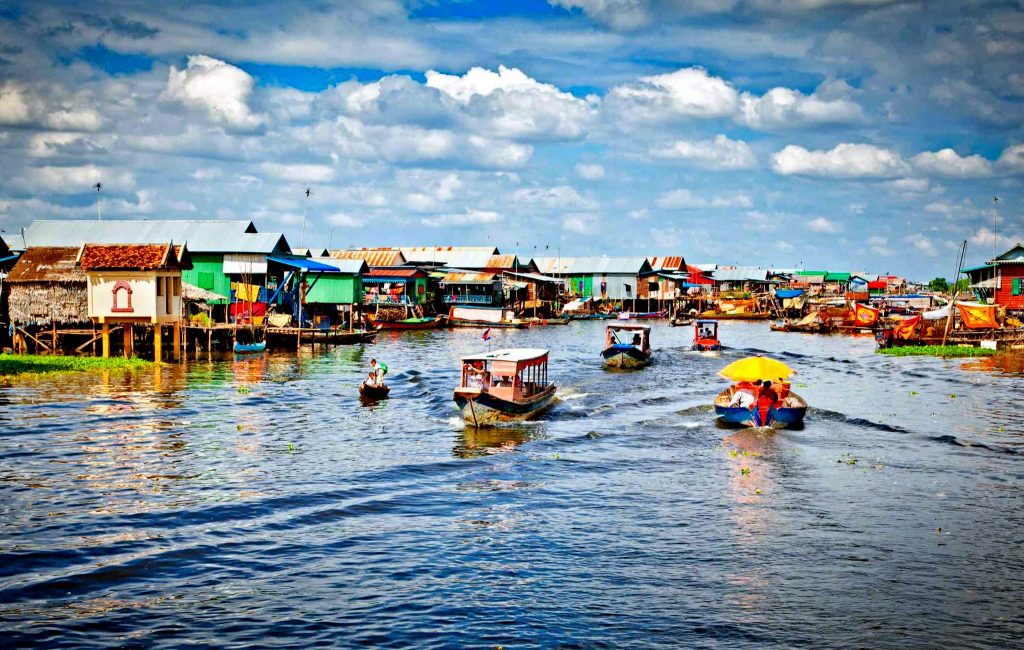
Cruise the serene lake, witness floating villages, and spot endangered wildlife in this watery wonderland. Tonle Sap Lake is the largest freshwater lake in Southeast Asia, and one of the most productive and biodiverse ecosystems in the world. The lake is connected to the Mekong River by the Tonle Sap River, and its size and depth vary dramatically depending on the season.
During the dry season, the lake covers about 2,500 square kilometers, and during the wet season, it expands to about 16,000 square kilometers, flooding the surrounding forests and fields. The lake supports a rich and diverse flora and fauna, including over 300 species of fish, as well as birds, reptiles, mammals, and plants. Some of the endangered species that live in or around the lake are the Mekong giant catfish, the Siamese crocodile, the Irrawaddy dolphin, and the Bengal florican.
One of the most fascinating and unique features of Tonle Sap Lake is the floating villages, where thousands of people live in houses, schools, shops, and temples that are built on stilts or rafts. The floating villagers are mostly fishermen and farmers, who adapt to the changing water levels and rely on the lake’s resources for their livelihood. The floating villages offer a glimpse into the traditional and resilient way of life of the lake’s inhabitants, as well as their culture and religion. Some of the most visited floating villages are Chong Kneas, Kompong Phluk, Kompong Khleang, and Mechrey.
Sihanoukville
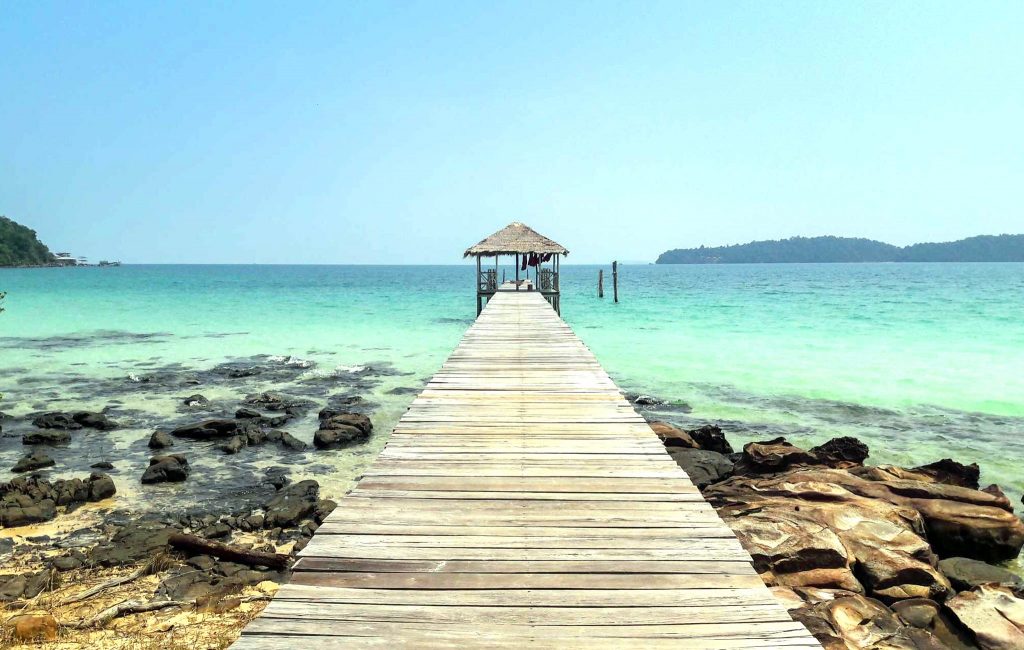
Sihanoukville is a coastal city in Cambodia and the capital of Preah Sihanouk Province. It is the country’s premier seaside resort, with a string of beaches and islands along its coastline. Sihanoukville is also the gateway to the Sihanoukville Autonomous Port, the only deep-water port in Cambodia, which connects the country to international trade and commerce. Sihanoukville offers a variety of attractions and activities for travelers, such as:
- Relaxing on the sandy beaches, such as Otres Beach, Sokha Beach, and Ochheuteal Beach, where you can enjoy the sun, the sea, and the breeze.
- Exploring the marine life, such as snorkeling, diving, kayaking, and fishing, in the clear and turquoise waters of the Gulf of Thailand.
- Visiting the nearby islands, such as Koh Rong and Koh Rong Samloem, where you can experience the tranquility and beauty of the tropical paradise, with pristine beaches, coral reefs, and jungles.
Cardamom Mountains

The Cardamom Mountains are a vast and verdant range of hills and forests in the southwest of Cambodia, bordering Thailand. The mountains are home to a rich and diverse wildlife, including many endangered species, such as the Asian elephant, the clouded leopard, the Siamese crocodile, and the Irrawaddy dolphin. The mountains are also a refuge for several indigenous communities, who have their own languages, cultures, and traditions. The Cardamom Mountains offer a variety of attractions and activities for travelers who love nature and adventure, such as:
- Trekking through the lush and scenic trails, where you can encounter waterfalls, rivers, caves, and wildlife.
- Visiting the community-based ecotourism projects, such as the Osoam Community Center, the Chi Phat Wildlife Sanctuary, and the Elephant Valley Project, where you can learn about the conservation and education efforts, and support the local livelihoods.
- Exploring the hidden and ancient temples, such as Prasat Preah Vihear, Prasat Thom, and Prasat Ta Moan, which are located on the border with Thailand, and offer stunning views and architectural wonders.
- Cruising along the coastal and inland waterways, such as the Koh Kong Bay, the Tatai River, and the Stung Atay River, where you can enjoy the serene and scenic landscapes, and spot dolphins, birds, and fish.
The Cardamom Mountains are a destination that will amaze and inspire you with their natural beauty and cultural diversity. You can experience the wild and authentic side of Cambodia, and discover a hidden gem in Southeast Asia.
Preah Vihear Temple
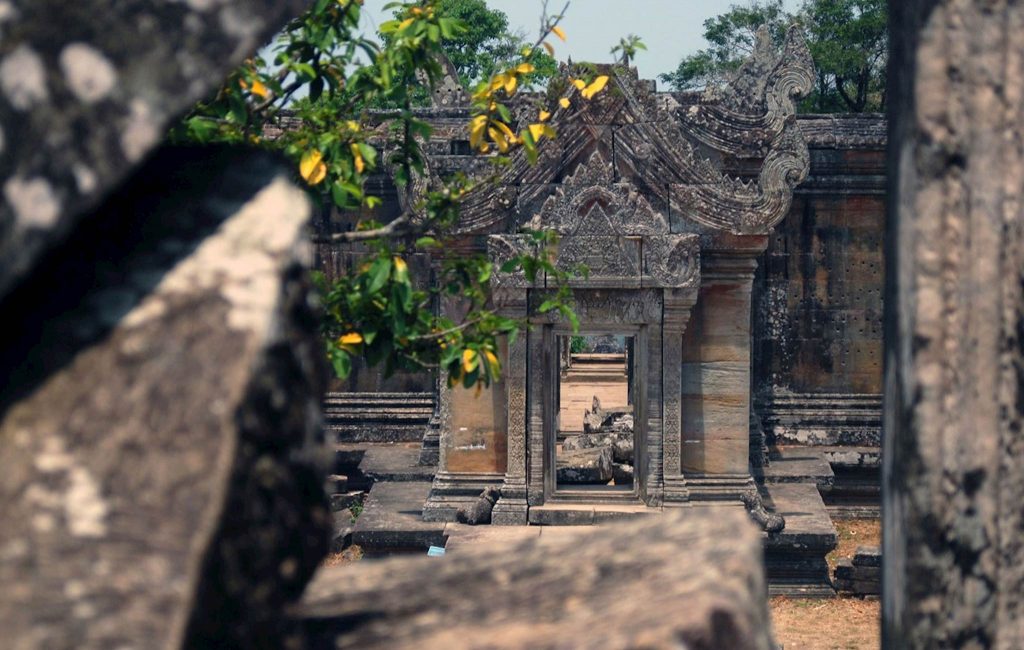
Preah Vihear Temple is an ancient Khmer temple that was built by the Khmer Empire and is on the top of a 525-metre (1,722 ft) cliff in the Dângrêk Mountains, in the Preah Vihear province, Cambodia. The temple is dedicated to Shiva, one of the main Hindu gods, and features a series of sanctuaries linked by a system of pavements and staircases over an 800 metre long axis. The temple dates back to the 11th century AD, but its complex history can be traced to the 9th century, when the hermitage was founded. The temple is a masterpiece of Khmer architecture and art, with exquisite carvings and sculptures depicting scenes from Hindu mythology and history. The temple also offers breathtaking views of the plain of Cambodia, which is now cut off by the international border with Thailand.
Preah Vihear Temple is a destination that will impress culture enthusiasts, adventure seekers, and history buffs alike. Culture enthusiasts can admire the beauty and elegance of the temple, and learn about the religious and artistic significance of its design and decoration. Adventure seekers can enjoy the thrill and challenge of climbing the steep and narrow stairs to reach the temple, and explore the surrounding natural environment. History buffs can discover the fascinating and turbulent history of the temple, which has been a source of dispute and conflict between Cambodia and Thailand for decades. In 1962, the International Court of Justice ruled that the temple belongs to Cambodia, and in 2008, the temple was listed as a UNESCO World Heritage Site. However, the border dispute remains unresolved, and the temple is sometimes closed to visitors due to security reasons.
Preah Vihear Temple is one of the best places to visit in Cambodia, as it showcases the glory and the mystery of the Khmer Empire, as well as the beauty and the charm of the Cambodian landscape. It is a place that will inspire and awe you with its natural and cultural wonders.
Kampot & Kep

Unwind in laid-back riverside towns, savor fresh seafood, and cycle through pepper plantations and salt fields. Kampot and Kep are two charming and relaxed towns in the south of Cambodia, located along the coast and the river. Kampot and Kep are known for their colonial architecture, their natural scenery, and their culinary delights.
Kampot is a riverside town that has a laid-back and bohemian vibe, with cafes, bars, and art galleries. Kampot is also famous for its pepper, which is considered to be one of the best in the world. You can visit the pepper plantations and learn about the history and production of this spice, as well as taste some of the dishes that use it, such as the Kampot pepper crab. You can also enjoy the scenic views of the river and the mountains, and take a boat trip or a kayak tour to explore the mangroves and the islands.
Kep is a seaside town that was once a popular resort for the French and the Cambodian elite, but was largely abandoned and destroyed during the Khmer Rouge era. Today, Kep is a tranquil and picturesque destination, with a long and sandy beach, a lively crab market, and a national park. Kep is renowned for its seafood, especially its crabs, which are caught fresh from the sea and cooked with Kampot pepper and lime. You can also visit the national park, which covers a hilly area with lush forests and trails, and offers panoramic views of the coast and the islands. You can also take a boat trip to the nearby Rabbit Island, where you can enjoy the pristine beaches and the coral reefs.
Battambang
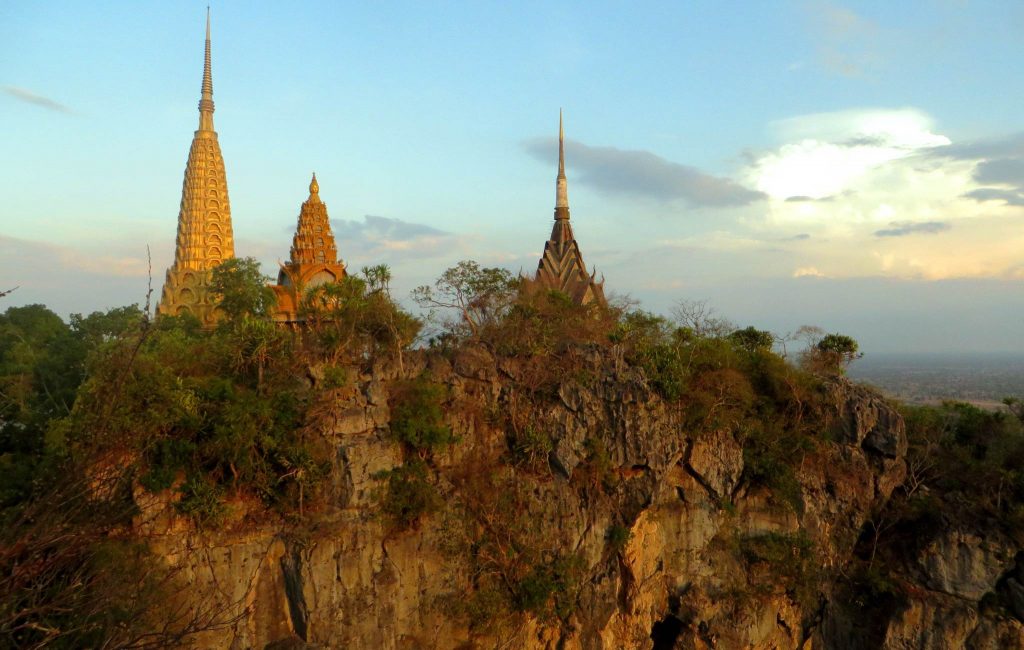
Ride the bamboo train, delve into French colonial architecture, and discover hidden temples, quirky markets, and bat caves. Battambang is the second largest city in Cambodia, located in the northwest of the country, along the Sangker River. Battambang is a charming and cultural city, with a well-preserved French colonial heritage, a vibrant art scene, and a rural charm.
One of the most fun and unique things to do in Battambang is to ride the bamboo train, also known as the norry. The bamboo train is a simple and ingenious contraption, consisting of a bamboo platform, a small engine, and two sets of wheels, that runs on the old railway tracks. The bamboo train can reach speeds of up to 40 kilometers per hour, and offers a thrilling and scenic ride through the countryside, passing by rice fields, villages, and bridges. Battambang is also a great place to explore the French colonial architecture, which dates back to the 19th and 20th centuries.
You can admire the elegant and colorful buildings that line the streets and the riverfront, such as the Governor’s Residence, the Old Market, and the Central Market. You can also visit the Battambang Museum, which displays a collection of Khmer art and artifacts, and the Phare Ponleu Selpak, which is a circus and arts school that showcases the talents of local children and youth. Battambang is also a gateway to some of the hidden and ancient temples in the region, such as Wat Banan, Wat Ek Phnom, and Phnom Sampeau.
Phnom Sampeau is a hill that has several caves, pagodas, and statues, as well as a dark history of being used as a killing field by the Khmer Rouge. One of the caves, the Bat Cave, is home to millions of bats, which fly out in a spectacular formation at dusk.
Mondulkiri
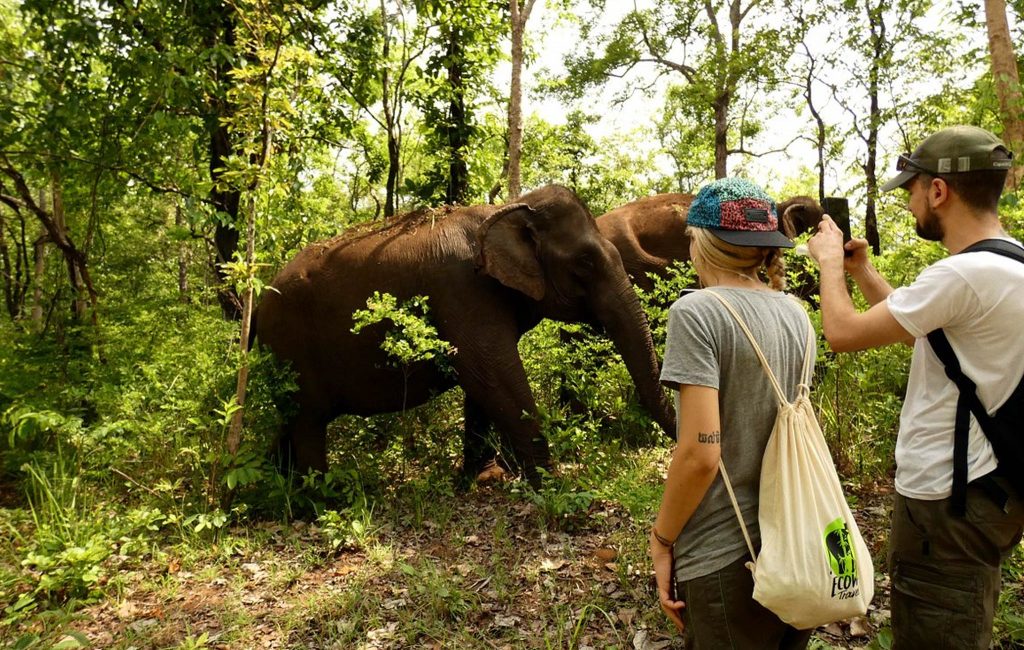
Trek through lush rainforests, spot elephants and gibbons, and immerse yourself in the culture of indigenous communities. Mondulkiri is the largest and most sparsely populated province in Cambodia, located in the east of the country, bordering Vietnam. Mondulkiri is a remote and rugged destination, with rolling hills, dense forests, and waterfalls.
Mondulkiri is a paradise for nature and adventure lovers, who can enjoy trekking, camping, wildlife watching, and waterfall swimming. Mondulkiri is also home to several indigenous groups, such as the Bunong, the Tampuan, and the Kroeung, who have their own languages, customs, and beliefs. You can learn about their culture and traditions, and support their community-based tourism projects, such as the Elephant Valley Project, which is a sanctuary for rescued and retired elephants, and the Gibbon Spotting
Cambodia is a country that offers a diverse and fascinating range of tourist attractions, from ancient temples and historical sites, to modern cities and cultural experiences, to stunning beaches and natural landscapes.
Whether you are looking for a cultural, adventurous, or relaxing trip, you will find something that suits your taste and budget in Cambodia. We have shared some of the best places to visit in Cambodia in 2025, but there are many more to discover and explore. We hope that this article has inspired you to plan your next trip to Cambodia and enjoy the beauty and charm of this amazing country. If you have any questions or comments, please feel free to leave them below or contact us via email. We would love to hear from you and help you with your travel needs.
Thank you for reading and happy travels!
